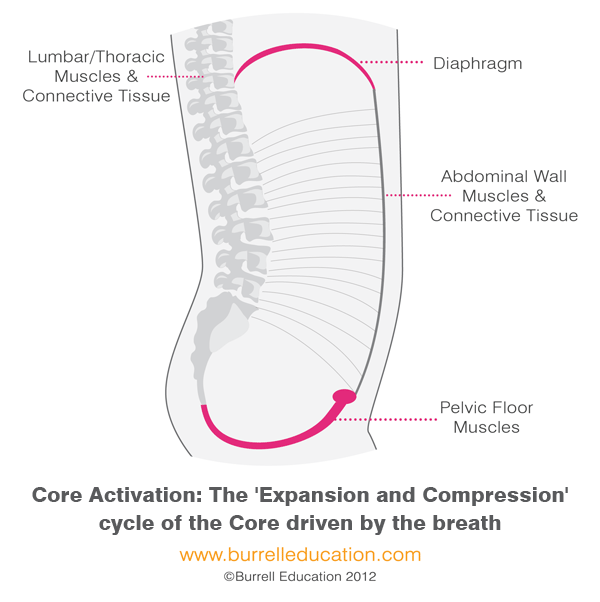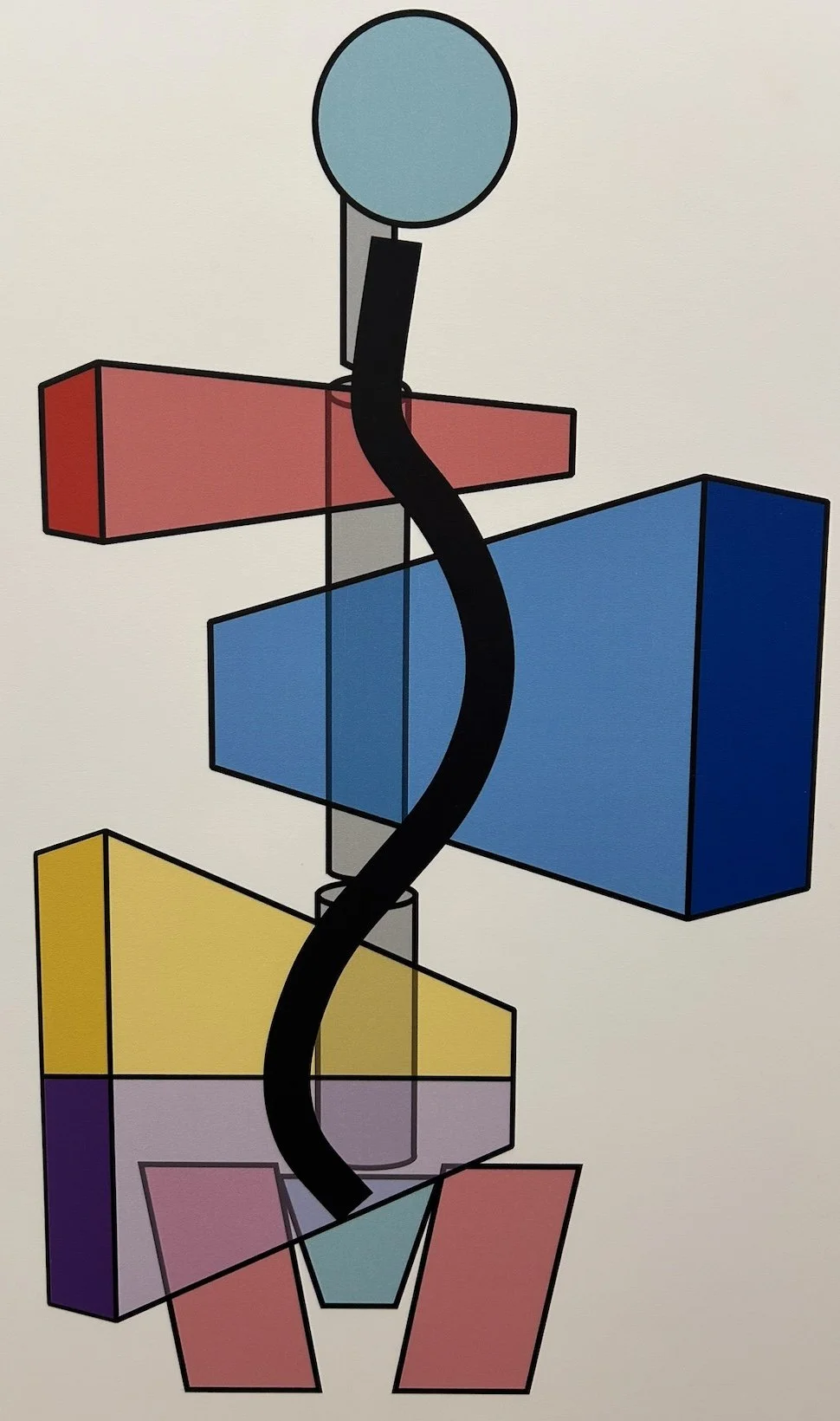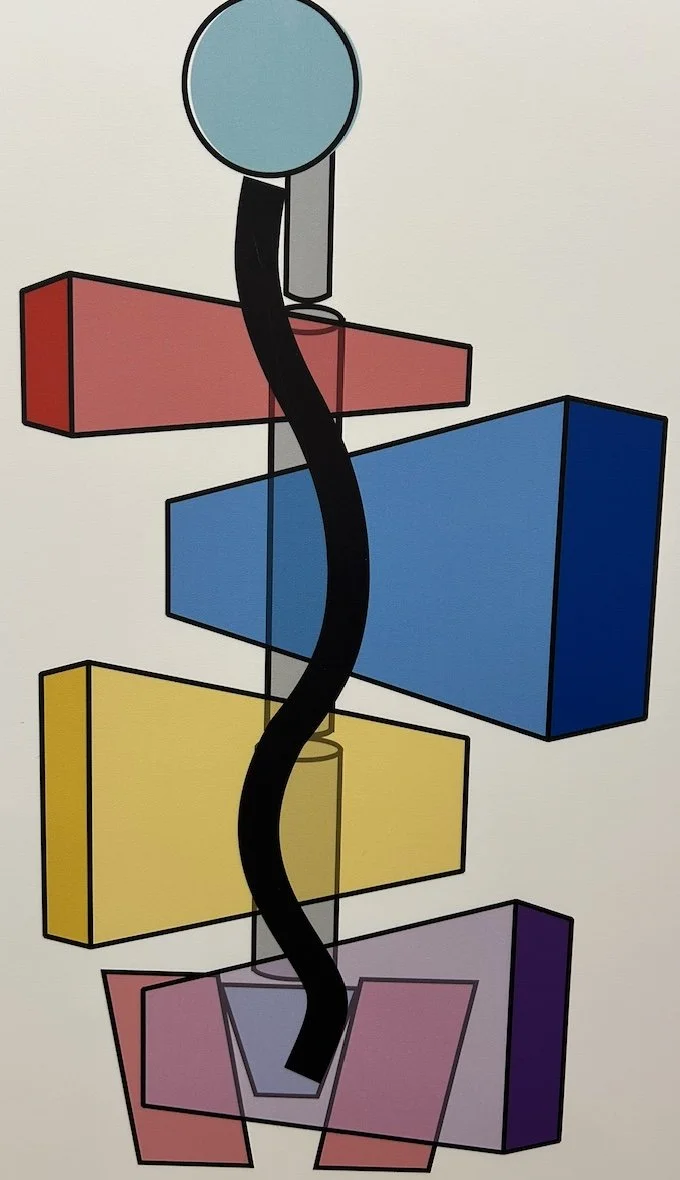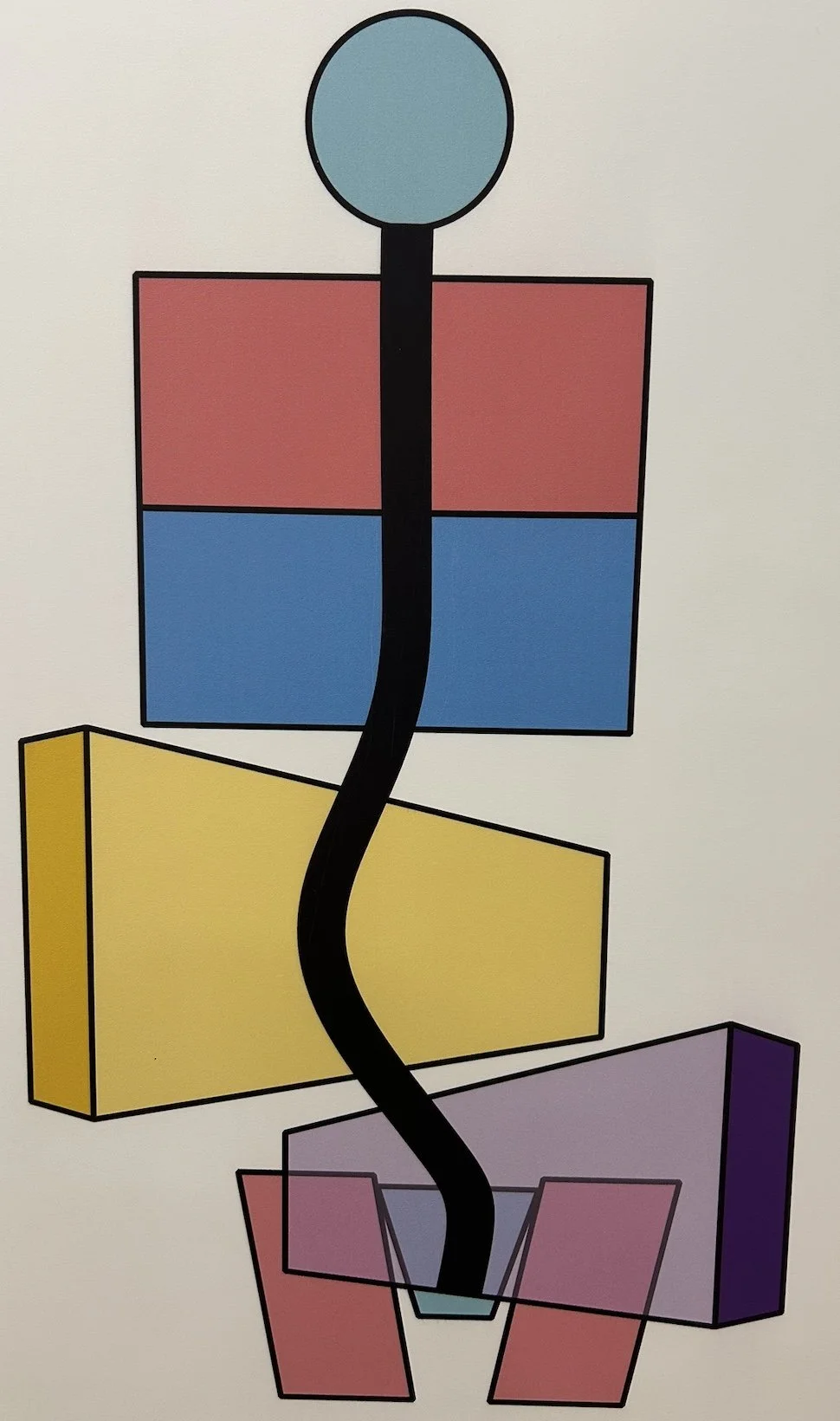Does Scoliosis Impact My Pelvic Floor?
Summary, or tl;dr section
This one’s a bit of a lengthier read, so here’s what to expect:
If you have scoliosis, your pelvic floor might be working harder than you realize. Curves in the spine can affect your pelvis (as well as the pelvic floor muscles) and change how your core muscles work together, sometimes leading to bladder and bowel issues, or pain in the low back, groin or hips. Here’s how to recognize if your pelvic floor needs a little support and be sure to check out Part 2 for more help.
Not only are your spine and your pelvis connected, they are best friends — when one moves, so does the other. We are, after all, connected and covered by strong but flexible strands of connective tissue which both hold us together and allow us the stability to move the ways we want to during our everyday lives.
When you live with scoliosis, the alignment of your spine can impact how your body feels, from head to toe — including muscles you can’t see, like your pelvic floor. These deep core muscles play a crucial role in so many of our bodily functions, such as postural control, lymph and blood flow, core strength and power generation, sexual function and bowel and bladder control.
Quick glossary of terms
Torsion — the twisting that happens within the spine bones
Intra-thoracic pressure — the pressure within the ribcage and chest, allowing us to breathe
Intra-abdominal pressure — the force of our abdominal organs and the pressure that stabilizes our core
Core canister — the muscles that make up the top, bottom and sides of what we understand as our “core muscles”
If you’re not sure what the pelvic floor is, check out this blog for more information. In short, the pelvic floor is a group made up of about 14 muscles which support our organs and play a role in many of our bodily functions. Yes, everybody has one (whether you have a penis or a vulva), and yes, everyone can experience issues with those muscles.
This particular blog is discussing how scoliosis can impact our pelvic floor and some ways to feel more connected to it.
But before we proceed, a disclaimer:
In case you haven’t seen my other blogs, here’s your friendly reminder that this blog is solely for your information from an expert in scoliosis, spinal fusion and pelvic health; therefore this blog and all the information contained within it can not serve as medical advice. Remember each person will have different circumstances and you should discuss your own with your personal medical & wellness team, or you can book a consult with me for my expert opinion.
How the spine typically moves without scoliosis
In order to appreciate the impacts of scoliosis on our body mechanics, let me describe typical spine movement. When the spinal segments are all aligned without twists and turns, each individual spine bone, or vertebra, can move pretty evenly with the segments above or below it. That means, the force created by every bend, twist or turn you do is evenly distributed among all 24 moveable segments (7 cervical segments, 12 thoracic segments, 5 lumbar segments).
That means, unless there are other structural issues, no one portion of the spine is responsible for all of the movement.
There’s also typically a rhythm to how our muscles move and work together. Many movement professionals talk about the interplay of our core canister muscles. The analogy is that our abdomen gets its stability in the same way a soda can does - 4 solid walls pressurized from the inside. I speak about this concept and the muscles in more detail in my blog on the pelvic floor, but in short check out this amazing graphic below to understand this core canister and how everything moves as we breathe:
When these muscles are functioning well, there should be some dynamic movement in all of the layers. As we breathe in, muscles expand and lengthen, and as we breathe out they return to their resting position.
You can imagine how some twisting and shifting of parts of our spine may impact this rhythm…
If you’re unfamiliar with scoliosis and what it is, check out this blog describing it first for more detail. When we do have a scoliosis curve (or more than one), there are portions of the spine that cannot move as well because of the shifting and rotation of the individual segments that happens within the curve. Because those segments cannot move as well, the movement must come from the remaining segments - so, the same amount of movement and force across fewer segments of the spine. That’s one reason why you may feel stiffer or “stuck” when you move one way or another - your spine literally can’t move the way it was designed to!
If you have more than one scoliosis curve, this may mean that the bulk of your movements are happening at only a few segments between the curves! That’s one reason why certain joints in the spine are more at risk of wear and tear than others…
How scoliosis impacts the alignment of our pelvis
Despite what you may have read online or heard from your doctor, scoliosis impacts the whole body - from head to toe. Regardless of where your spine curves, how many curves you have or how big they are, your pelvis is affected by it.
Muscle imbalances
Because scoliosis is a rotation of the spine, it creates torque and torsion in the segments within the curve, and often there is counter-torque and torsion in other areas of the spine. When scoliosis changes how your spine moves, it can lead to certain muscles becoming tight, weak, or unbalanced — which can lead to symptoms many people don’t expect, or even connect with or attribute to their scoliosis. Keep reading to learn more about how the rotation in your spine impacts your pelvis…
The four pictures above show four different types of scoliosis. The red block stands for your neck, or cervical spine; the blue block stands for your mid-back, or thoracic spine; the yellow is your low back, or lumbar spine, and the purple depicts your pelvis. The beautiful pictures above use color and shape to help illuminate the 3-dimensional nature of scoliosis and how each part is impacted by the connecting segments. These incredible graphics were designed by Dr. Manuel Rigo, whose work continues to revolutionize the understanding and treatment of those of us living with scoliosis worldwide.
Rotation in the spine, ribs and pelvis
Now let’s take a look at the rotational component. After all, scoliosis is not just a shifting or bending of the spine - it’s also a twisting or rotation. The twisting of the spine segments pulls the other structures attached to it along with it, which may be the ribs or the pelvis, depending on where the curve is in the spine.
Check out this illustration of a ribcage with scoliosis. Because of the twisting in the spine to the right, the front of the right ribcage is more flat - or concave - while the front left is more prominent - or convex. It’s the opposite on the back side of the ribs!
Click or tap the picture to get the book where this illustration came from!
How this shows itself in daily life
Think of your spine as a curved tree - the more the trunk of the tree bends and shifts, the more the base of the tree must shift and move to support it. That changing force can cause pulling and tension on the tree’s roots, which can cause dysfunction over time.
In case it wasn’t clear, for this example the base of the tree would be our pelvis, and the tension is transferred to our muscles and organs.
Sometimes this shift can be imperceptible, but other times we can detect subtle signs of scoliosis in our daily activities.
These signs can look like:
Stiffness in the spine or ribs, feeling like tightness or difficulty getting deep breaths
Feeling “stuck” in certain positions
Seeing one side of your ribcage more, either from the front or the back
Feeling as though one hip is higher or one leg is longer (because of the shifting and rotation in the pelvis)
It can be common to think one leg is longer in scoliosis, though most of us actually don’t have a leg length difference!
You may feel unbalanced when you’re standing or walking, like you’re leaning to one side, or you may see the imbalance in pictures - even if you don’t sense it
Your gait, or walking pattern, may feel uneven thanks to the shift or rotation in your pelvis and hips
Certain muscles can feel excessively tight, while still others are “always on” due to the muscle imbalance
So what does this mean?
I can imagine that your head may feel full with all of this information! I hope you’re understanding how complex our bodies are and the interconnectedness of how we hold ourselves. Posture is quite complicated and is dynamic!
Some ways scoliosis may affect your pelvis and its muscles
How much your pelvis shifts or twists to maintain your balance will vary based on how big your curves are, or how much your body leans into them.
Scroll back up to the graphics of the curve types if you need to. In that first photo, you’ll see the blocks are pretty well aligned compared to the ones that follow.
Can you imagine how those shifts in posture could impact your core?
If you have kyphosis, or more rounding in your back or ribcage, typically that also impacts how your body aligns from the side. With the ribs shifted back, our pelvis also has to tilt to keep us upright - and that can lead to uneven stresses on the pelvic floor muscles.
With all these factors in mind, your pelvis is impacted differently depending on the shifts and rotations above and below it.
Still having a hard time visualizing it? Check out the graphic below:
An over-simplified depiction of how the forces on our spine and pelvis are changed with scoliosis.
How scoliosis may create (or worsen) pelvic floor dysfunction
To summarize, scoliosis can create a number of different demands on our pelvis, and also our pelvic floor muscles. Here are several ways a scoliosis curve — or more than one — may impact the pelvic floor muscles:
Uneven forces on the pelvic floor
Shifting, twisting or tipping of the pelvis can create asymmetrical, or uneven, forces on the pelvic floor muscles. Meaning, one side of the pelvic floor may be bearing more stress or load than the other.
This could lead to leaking, or pain deep in the pelvis, the groin, hip or low back (particularly with exertion or certain types of movement).
Pelvic floor muscle compensation
Since the pelvic floor muscles were designed to work in concert with the other core muscles, those muscle imbalances caused by the scoliosis may create more tension or force on the pelvic floor.
Changing pressures within the pelvis
As the core gets shifted and rotated with scoliosis, it creates changes in our internal pressures - namely, the intra-thoracic and intra-abdominal pressures that help stabilize us. This change in pressure systems can result in compensatory breathing mechanics and alter our muscles that work to support us. These shifts can lead to more downward pressures on the pelvic floor, which could lead to overactive muscles and may contribute to pelvic organ prolapse, or descent of the pelvic organs into the vaginal opening (for vulva owners).
Digestive changes
If you have a lumbar curve, the torsion from your spine could impact how food and waste moves through your gut - leading to slower motility, more bloating and constipation. Chronic constipation and straining to pass stool can also lead to overactive pelvic floor muscles and can increase your risk for pelvic organ prolapse over your lifetime.
Bladder symptoms
A 2025 study suggested that participants with larger scoliosis curves was related to issues with bladder issues and pelvic floor concerns. As usual with scientific studies, more research is needed.
On a personal note, I want to gently remind you that just because there may be a relationship between scoliosis and pelvic floor dysfunction, doesn’t mean there is a guaranteed link, nor that you will have issues if you have a larger curve. This particular study, though its title is powerful, only studied 12 adolescent girls at one clinic. You may have heard this phrase before, but remember correlation is not causation — meaning the presence of a relationship doesn’t mean one thing caused the other: only that there is a relationship.
In that same 2025 study, higher curve severity tracked with more bladder or pelvic floor complaints — though sample size was small, so use this as a consideration, not proof.
That said, scoliosis is rarely the only cause of pelvic floor dysfunction on its own. Other things that could contribute to pelvic floor dysfunction include chronic constipation, multiple pregnancies and deliveries, hormonal changes such as perimenopause or menopause, or pelvic or abdominal surgeries disrupting the delicate system that is our core and pelvic floor balance. There are other research studies that haven’t found a direct link between scoliosis and pelvic floor symptoms, like this 2016 study investigating the cases of over 1500 women. Since not too many research studies have explored the connection of scoliosis and pelvic floor, there’s not much currently out there and more work is needed. For my part, I’m looking at how I can start contributing to the science with my particular intersection of skills…
If you’re reading this and realizing that your scoliosis may indeed be impacting your pelvic floor, don’t stress! Head on over to Part 2 to learn more about how you can take some steps to give your pelvic floor the support that it needs…
Understanding how scoliosis affects your pelvic floor is the first step toward better balance, control, and comfort in your body. Please be encouraged that you can absolutely make positive changes — even years after your diagnosis.
In my next post, we’ll look at simple, evidence-based ways to support your pelvic floor when you have scoliosis. I’ll share gentle movement, breathing, and alignment strategies that help your core and pelvic floor work together more efficiently.
What to read next
Questions? Leave a comment below, email me or book a complementary 15-minute clarity call and get your questions answered!
Also, find me on Instagram for more free tips and info, and join the newsletter family for everything still to come!











